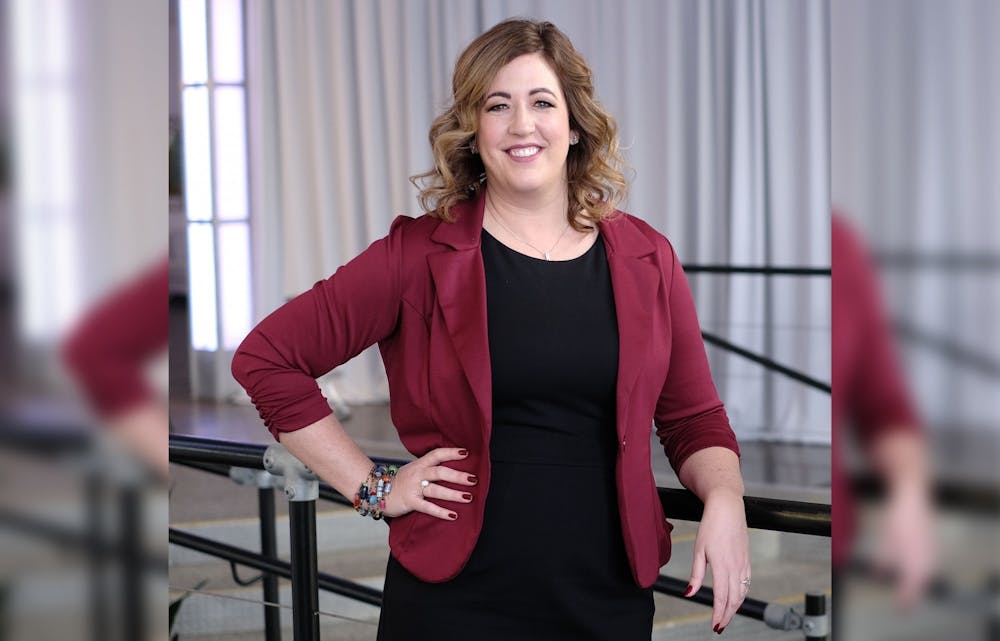Megan Miller is the deputy director for contact tracing of the IU COVID-19 Medical Response Team , which means she oversees contact tracing operations on all IU campuses.
She answered questions regarding IU’s contact tracing process and contact tracers.
How are close contacts identified?
The most common way for contact tracers to identify a close contact to a positive case is by interviewing the individual who tested positive, Miller said. In a 30-minute phone interview, a contact tracer will ask the person who tested positive to identify anyone who might have been within 6 feet of them for at least 15 minutes starting from two days before their symptoms began or they were tested, as the Centers for Disease Control and Prevention define close contacts.
Once the names are provided, contact tracers will retrieve each close contact’s contact information through IU's database.
In the case that someone believes they fit CDC’s definition of a close contact but is never contacted by a contact tracer, Miller said they should use the COVID-19 Self Reporting Form on One.IU.
Miller said individuals without access to technology can ask an administrator to report their status as a close contact on their behalf. She said this channel of reporting is mostly for IU staff members reporting their statuses to their human resources department.
How do they reach close contacts?
Once an individual is identified as a close contact either by self-reporting or through a contact tracer, a case will be created in IU’s contact tracing database, Miller said. Each close contact will then automatically receive a scripted email and text message with detailed quarantining instructions.
Miller said contact tracers reach out to all close contacts once they are in the contact tracing database, but it might take time for them to reach them on the phone for the contact tracing interview.
She said IU is now prioritizing students with an IU housing contract. It usually takes about a few hours for the tracers to reach them after the phone interview with the positive person.
Regarding confidentiality, Miller said IU’s contact tracing database is built upon the university’s existing database of personal information of members of the IU community. She said all contact tracers are HIPAA certified and do not share personal information with others unless for public health purposes, such as with the local and state health departments if they so demand. However, they would report the personal information of individuals who refuse to talk to contact tracers or deliberately provide them with false information to the Office of Student Conduct.
“We’re being transparent about what we’re doing and how we’re doing it for sure,” Miller said. “And we want people to feel comfortable with the process.”
How many contact tracers are there?
IU currently has 30 active contact tracers for all its campuses, along with about five staff members from IU’s general contact line also trained to handle contact tracing, Miller said. They work in shifts from 7 a.m. to 9 p.m. every day and are currently supervised by two program managers.
According to the latest Sept. 8 update on IU’s COVID-19 Testing Dashboard, across IU’s nine campuses there have been 1,003 positive test results from mitigation testing since Aug. 24 and 398 positive test results from symptomatic testing since Aug. 1.
Miller said for each positive case at IU, she estimates an average of two close contacts, but that number is going up with people back to campus. She said this is a lot of work for the contact tracers, but the university is coming up with solutions to help them process the caseloads faster.
For example, she said to shorten the duration of each phone interview with positive individuals and close contacts, IU has launched a new online form for the interviewees to self-report their personal information instead of telling it all to a contact tracer.
She said IU is still hiring full-time and part-time contact tracers and there have been 300 applicants. Originally, IU had planned to hire 60 contact tracers, but Miller said she now wants the university to hire as many as possible.
Miller said the high caseload for the few staffers wasn’t beyond the university’s preparations. She said hiring takes time, and expects there to be at least 60 contact tracers in October.
“We are just doing things as quickly as we can so that we can create a safe environment for all our students, faculty and staff,” she said.
What are the qualifications of the contact tracers?
According to IU’s contact tracer job posting, applicants must have a high school diploma or GED and have had “one year working/volunteering in an organization where there was interaction with the public either in person or via telephone”. Interpersonal communications, data logging and problem-solving skills are among the required skills.
Miller said there are two contact tracing work stations— one on the Bloomington campus and one on the Indianapolis campus— but contact tracers can work remotely most of the time. She said neither the contact tracers nor the program managers need to have a professional background in medicine.
The contact tracers’ previous work experiences vary widely, she said, but some have public health degrees and some have prior work experience with IU.
Once hired, each contact tracer undergoes one week of training, taking the COVID-19 contact tracing course offered online by Johns Hopkins University. They also undergo training in HIPAA, FERPA, data use and privacy and information technology, as well as mandatory IU employee training and training on IU’s script for contact tracing interviews.
“All of these contact tracers, they’re just a few weeks into it,” Miller said. “They’re being trained on a lot of situations and nuances.”




